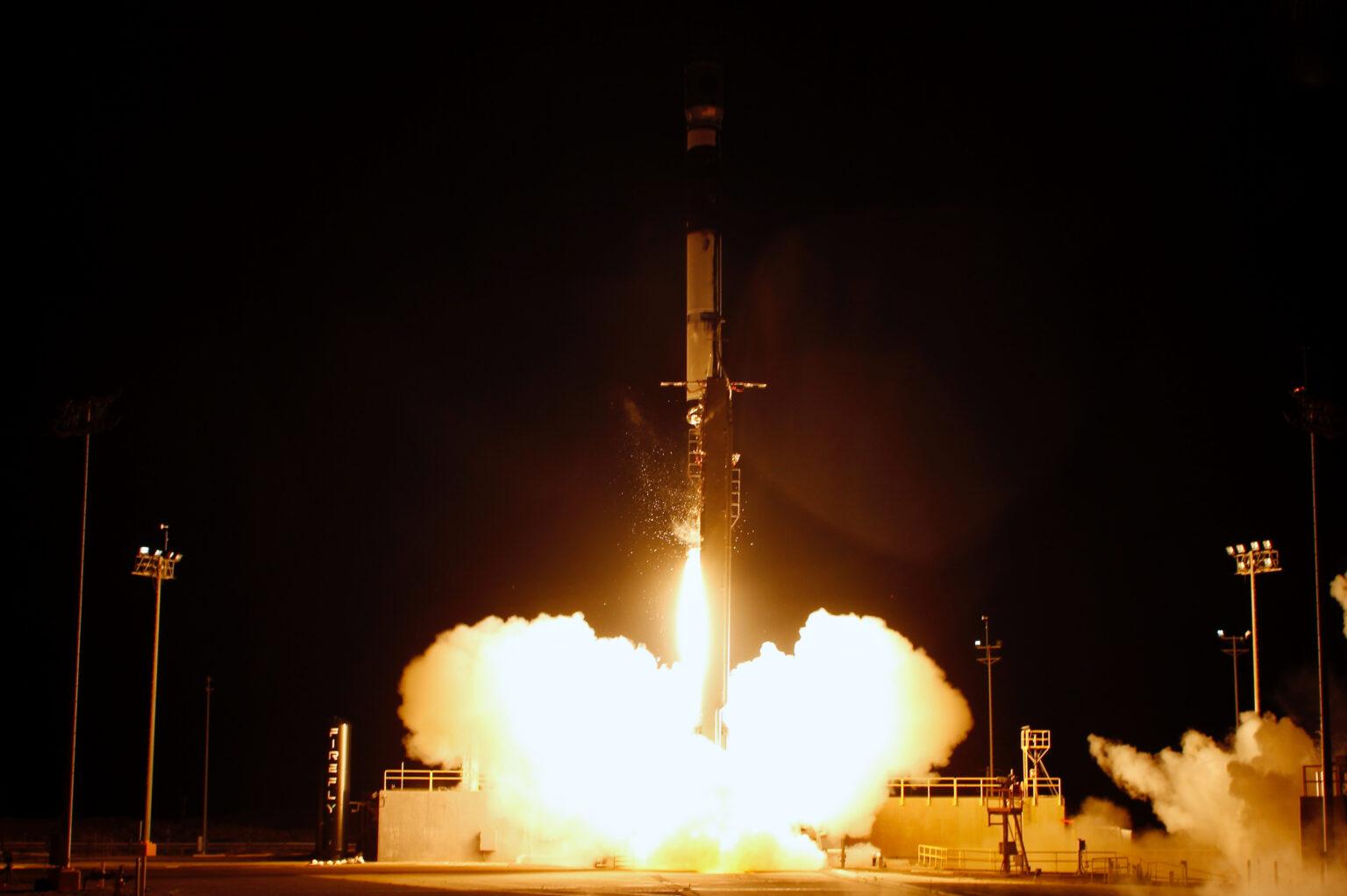
Firefly Aerospace launches Victus Nox.
Advancements in commercial space technology helped the U.S. Space Force, Millennium Space Systems and Firefly Aerospace pull off the Victus Nox demonstration of a rapid launch.
Firefly excuted its part of the demo in 27 hr., encapsulating the payload, transporting it to Vandenberg Space Force Base in California, mating it to the Alpha rocket and launching it on Sept. 15. For its part, Millennium Space Systems, a Boeing company, had 48 hr. to prepare the satellite for a space domain awareness mission and completed checkout of the spacecraft on orbit, which was declared operationally ready, just 37 hr. after launch.
That kind of turnaround has taken time to mature. In 2018, DARPA challenged industry to launch payloads on short notice, initially selecting 18 teams and later whittling the list down to Virgin Orbit, Vector Space and Astra. By March 2020, Astra canceled a Kodiak, Alaska, launch just before liftoff, and the challenge ended without a winner.
“The difference between the DARPA Challenge and today is that what is commercially available was not of age then,” Firefly CEO Bill Weber told reporters on a Sept. 26 conference call. “We were the first, but we will not be the only.”
Spacecraft and ground systems have seen similar advancement, Millennium CEO Jason Kim said. “Five years ago, Millennium didn’t have an extra production line. But now we have several.”
Additional production capacity helped the company pull a bus off an existing line and modify it for the government within months.
Digital design and engineering tools helped Millennium streamline its production, Kim said. And digital simulations helped Firefly rehearse a complicated set of processes to prepare for its 24-hr. launch window.
“You can’t do a wet dress every single day of the week or several weeks in a row,” Weber said. “A lot of what we did in the run-up to this was digital simulation. We’re not going to disclose exactly which tools we use, because obviously some of that is to be learned by industry. But our sector is evolving and reinventing itself in terms of how it prepares to launch. I don’t think we could have met the be-prepared-to-launch 24-hr. window if we did not use digital simulation when we never approached the pad.”
Now that a 24-hr. launch capability exists, Weber said it will benefit the military and commercial industry. “I think we just opened a door,” he said.
Lt. Col. MacKenzie Birchenough, materiel leader for Space Safari at Space Systems Command, said Victus Nox is one demonstration for the Space Force to approach tactically responsive space. There is no limit to the different capabilities it can now put on orbit or respond to militarily–from providing space domain awareness to augmenting intelligence, surveillance and reconnaissance or providing tactical communications, Birchenough said. “There is no limit of what we can do and the different ways we have to respond.”





